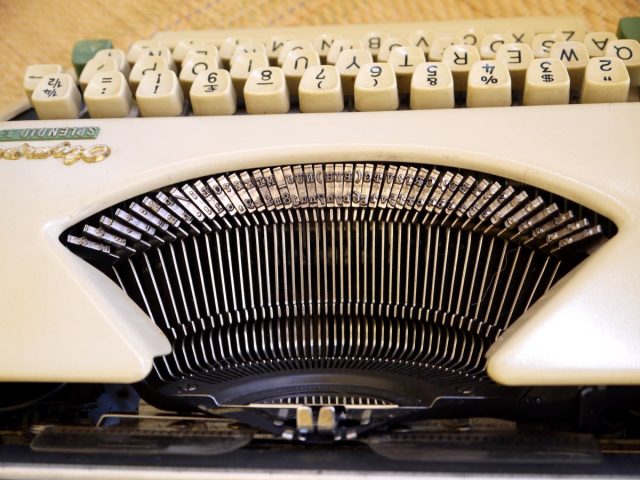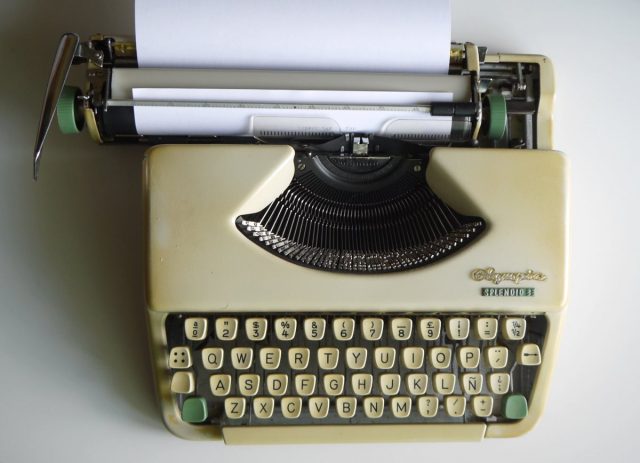Electronic typewriters that mimic the look and feel – and to a certain extent – the functionality of old mechanical typewriters are wanted products. Many typewriter-like devices have been introduced lately, such as Rymek, Freewrite and Penna, targeted at distraction-free writing. How does the original product – a completely mechanical typewriter – function when used for real work? I decided to find out.
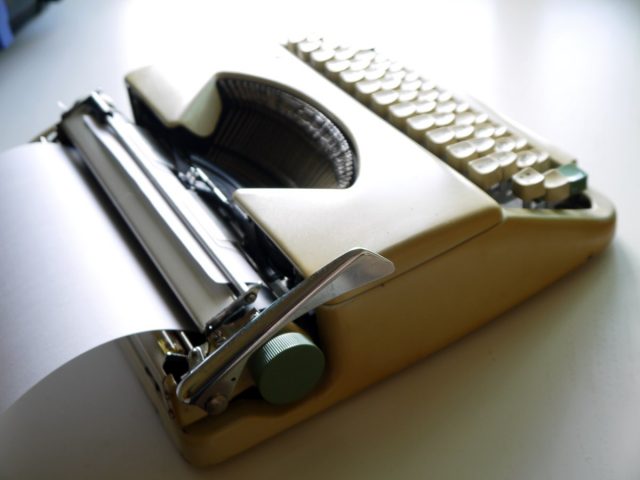
I dusted and oiled an old Olympia typewriter in order to discover if it still worked or if it had rusted into a useless piece of metal. It showed its age with a bit of rust here and there, plenty of wear and tear, but the machine still worked!
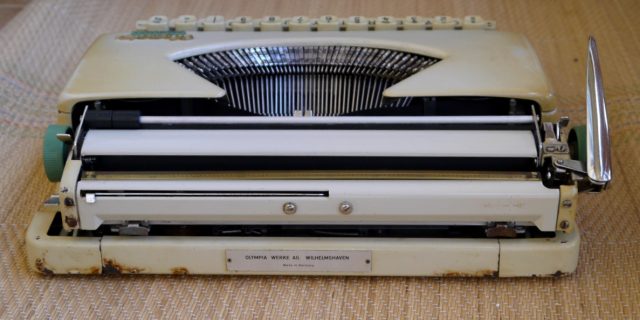
Bang, bang, clonk claimed the typewriter
It was like a miracle. Push a button, and watch a thin, beautifully molded metal arm hit the paper. Bang, bang, cling, clonk, bang. It sure made noise. Well, everyone in the house could hear I am working, and not watching esports videos on YouTube.
Banging keys, watching letters appear on plain white paper – realizing it was my fingers that made it happen – brought a feeling of achievement. I have made something concrete that can be touched and viewed. Look at it!
A couple of lines later, I realized I must forget about my six-finger semi-rapid typing system, and push the keys with index fingers only. The keys move a long way before they hit the paper. Also, hitting too quickly keys that are located next to each other may tangle them.
Did you know why the large key in computer keyboards is called Return or Enter? Its origin is the large handle – known as carriage return in typewriters – that advances the paper upwards and moves the entire carriage back to the beginning of new line. The handle is my favorite part in the typewriter. What a satisfaction it brings when I pull the handle, and feel the heavy metal smoothly move to a new position with high precision. Ah, the German engineering by Olympia.
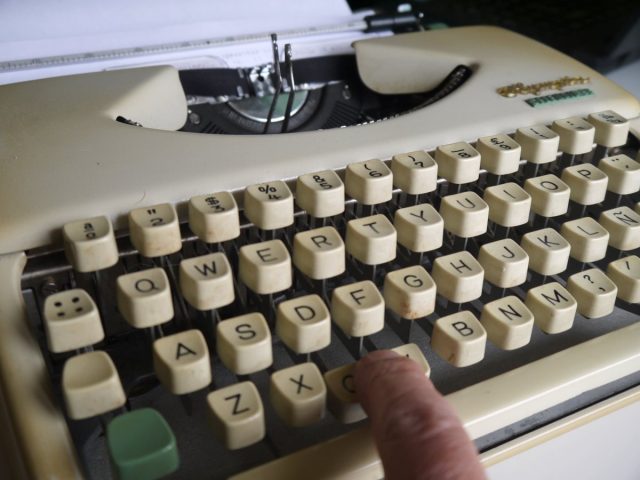
A typo means disaster
Accidentally, I made a typo. Now what? Leave it there and continue? Rip off the paper, and insert a clean sheet? Re-type the entire page? What?
At this point, I understand the lure of electronic typewriters that resemble their mechanical cousins, with a couple of key differences: it is possible to correct typos and save the typed texts in digital format for further editing.
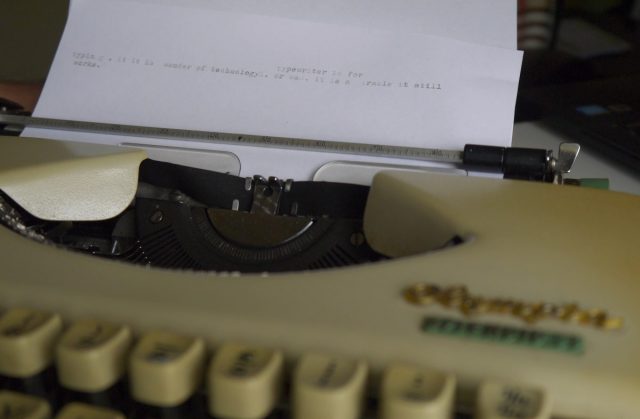
It is nostalgia, not a writer’s tool
I know some antique shops sell hundreds of refurbished old machines every month, movies have been made of typewriters, books have been written about these mechanical wonders (actor Tom Hanks seems to be the unofficial poster boy of the typewriter-movement), musicians are playing them like instruments, but are they seriously suggesting that typewriters should be used for real work? No, I don’t think so.
Of course, just like a professional carpenter may use a manual drill to make a unique special effect in a project, a professional writer may use a typewriter (probably an electronic version) for a specific reason, like avoiding distractions when working.
Mechanical typewriters certainly are wonders of old school engineering. They are beautiful products, enjoyable to photograph. You can see how they work, and appreciate the precise movement of the parts. If they break down, you can repair most problems by yourself.
Nostalgia is written all over the old keys, ribbons and carriages. Yet, nothing changes the fact that the world has moved on.

